Locus 3
By Geoffrey McCafferty and Sacha Wilke
Locus 3 was identified by shovel test pit survey as an area of high artifact concentration at the base of a low hill. An additional transect of shovel tests up the face of the hill revealed several complete vessels and a human skull. As a result of these discoveries five operations were excavated.
Two 1x1 m units were excavated at the base of the hill. There consisted of a relatively thin cultural layer over the light color subsoil, possibly the result of the lahar mudflow (Fig. 1). Sapoa period ceramics were found in these units, and one of the units featured a concentrated layer of cobble-sized stones that likey represents a living surface (Fig. 2).
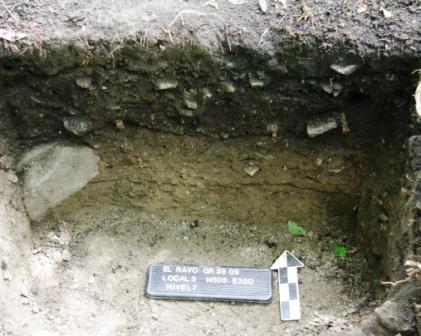
Figure 1: Unit N505 E320 profile of cultural layer over sterile subsoil
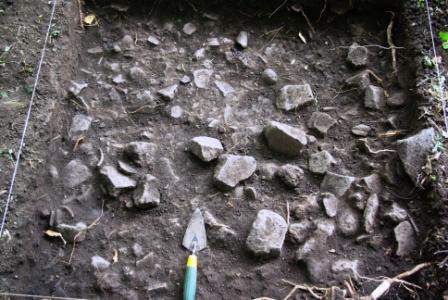
Figure 2: N505 E319 possible occupation surface
In Unit N524 E300 a complete Papagayo Polychrome superhemispherical bowl was found in the initial shovel test pit at 35 cm below surface (Fig. 3), and the test pit was terminated at 60 cm when the top of a human skull was exposed. This area was opened into a 2 x 2 m operation, with the upper layer (a dark soil stain) designated as Feature 32. A low concentration of human skeletal remains was found scattered throughout the operation,and was associated with a copper bell (Fig. 4) and a miniature olla with a cup inverted to form a lid (Fig. 5)
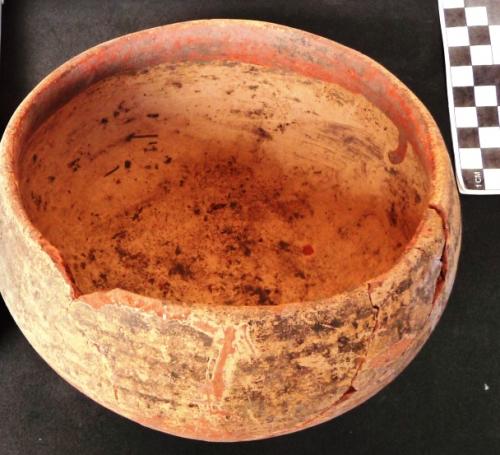
Figure 3: Papagayo bowl found in shovel test
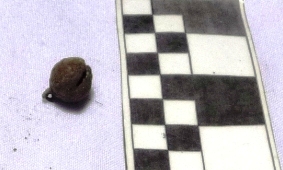
Figure 4: Copper bell

Figure 5: Miniature olla with inverted cup as cover
The most complete individual (Ind. #28) was represented by articulated long bones and a poorly preserved skull with teeth in N524 E301 (Fig. 6). This individual and its associated objects were designated Feature 40. Notable objects included a complete ocarina in the form of a pelican (Fig. 7), a jaguar tooth pendant (Fig. 8), several bone weaving tools, and a complete Papagayo Polychrome vessl (Fig. 9).
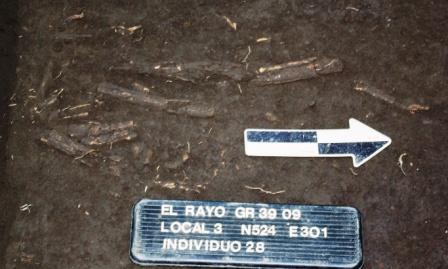
Figure 6: Individual #28 of Feature 40
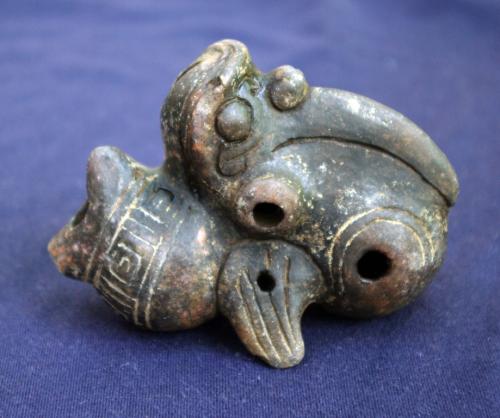
Figure 7: Ocarina
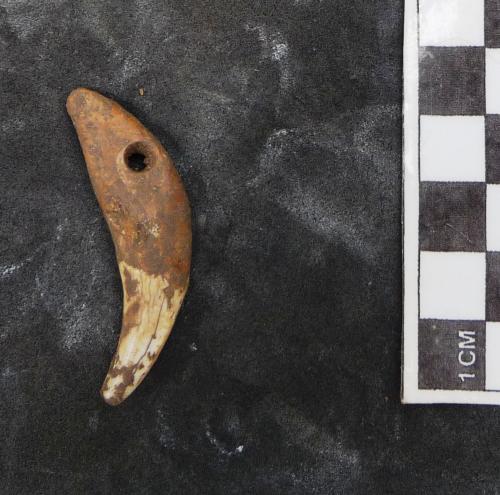
Figure 8: Jaguar tooth pendant

Figure 9: Papagayo vessel with skull of Ind. 28
The most complex operation at Locus 3 was designated as Feature 33, and was eventually expanded to 10 square meters in order to delimit a cluster of 18 vessels, two concentrations of human remains, and the stone foundation of a possible altar (Fig. 10). This operation was identified based on a complete vessel rim found in shovel test N535 E300. A 1 x 1 m unit at this location exposed parts of six vessels (Fig. 11). Twelve Sacasa Striated shoe pots were arranged in a line from north to south (Fig. 12), and several small bowls were included as possible offerings (Fig. 13). One of the smaller bowls was of the Vallejo Polychrome type (Fig. 14). Three of the Sacasa urns were excavated; all contained some human skeletal remains, one contained a broken tripod metate/seat (?), and another contained a chipped stone point.
East of the alignment of urns was a stone foundation consisting of two parallel lines of basalt boulders and flat slabs (lajas). These were bisected by three stone alignments to create two small chambers (Fig. 15). Excavations within this foundation recovered some potsherds and a few human remains, but not enough to justify identifying it as a burial crypt. Instead we are interpreting this as a possible foundation of a small structure associated with the urns, possible a form of shrine or altar.
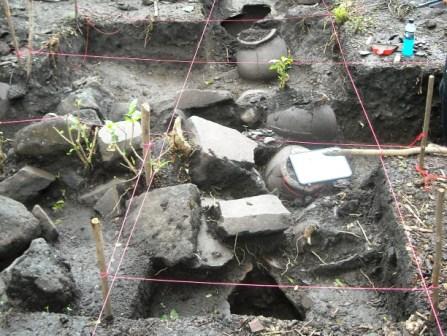
Figure 10: Feature 33
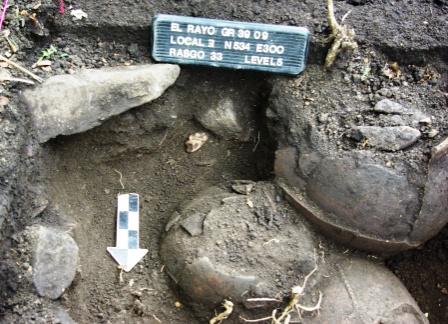
Figure 11: Unit N534 E300 with multiple urns

Figure 12: Feature 33 plan view
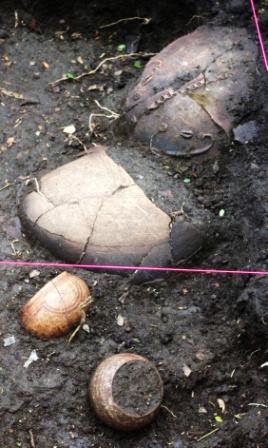
Figure 13: Feature 33 with small bowls associated with urns
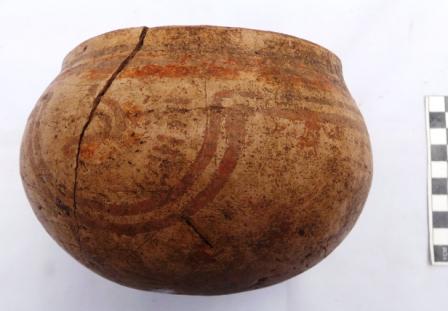
Figure 14: Vallejo bowl from Feature 33

Figure 15: Detail of stone foundation
Locus 3 presents a variety of archaeological contexts, including some puzzling features that are unique in Nicaraguan archaeology. Feature 33 was possibly deposited in at least two events, based on the overlap of some of the urns. The fact that there were bone fragments in all of the urns sampled suggests that these may have been burial urns, although the low density could also indicate the deposition of disarticulated fragments. The presence of unique objects in each urn (ie., the tripod metate/seat, weaving tools, and lance point) may have symbolic significance relating to the individual. The north/south orientation of the urns suggests a cosmological meaning that has not been documented previously. The association of the urns with the possible altar/shrine is also a unique pattern that sheds light on an as yet unknown aspect of pre-Columbian ritual.
The scattered nature of the human remains and offerings of Feature 32 may be the result of post-depositional factors. The deeper Feature 40 had better integrity, based on the articulated long bones. The presence of the ocarina, jaguar tooth pendant, weaving tools, and complete periform vase indicate an individual of high status. The poor preservation of the skeleton, and particularly the skull, inhibits the ability for bio-archaeological analysis.

